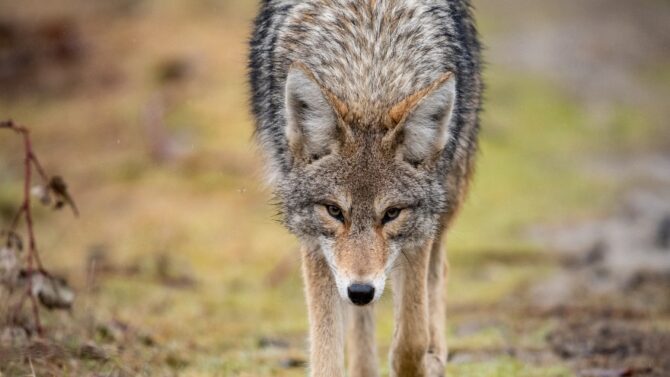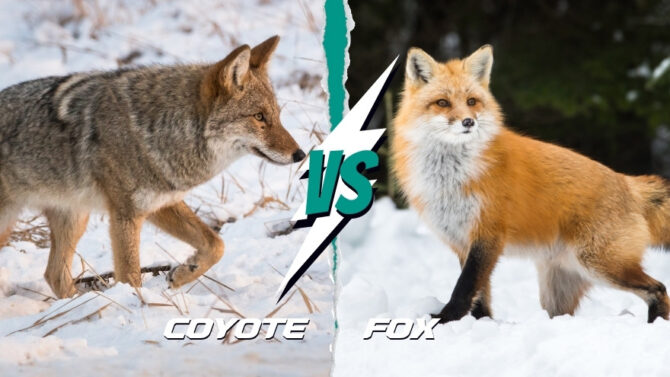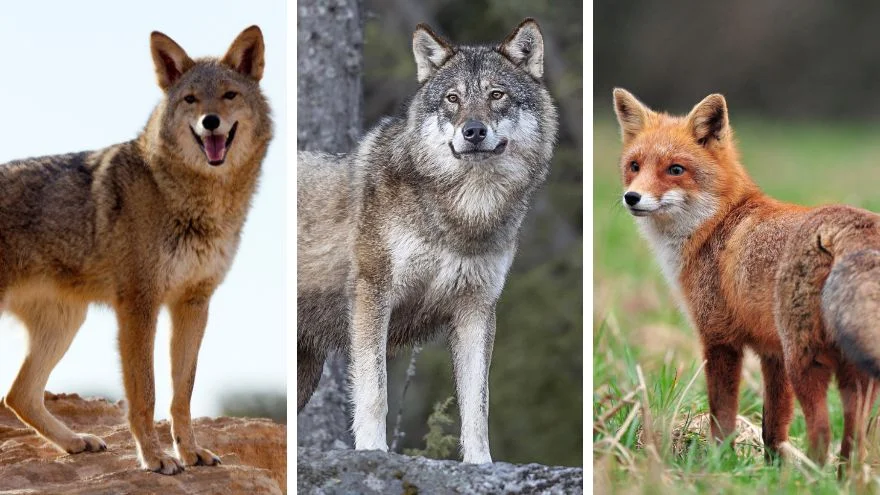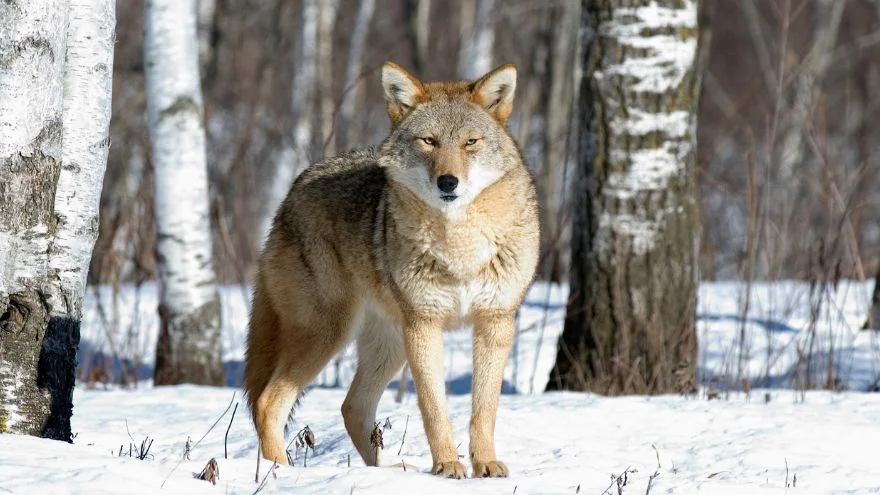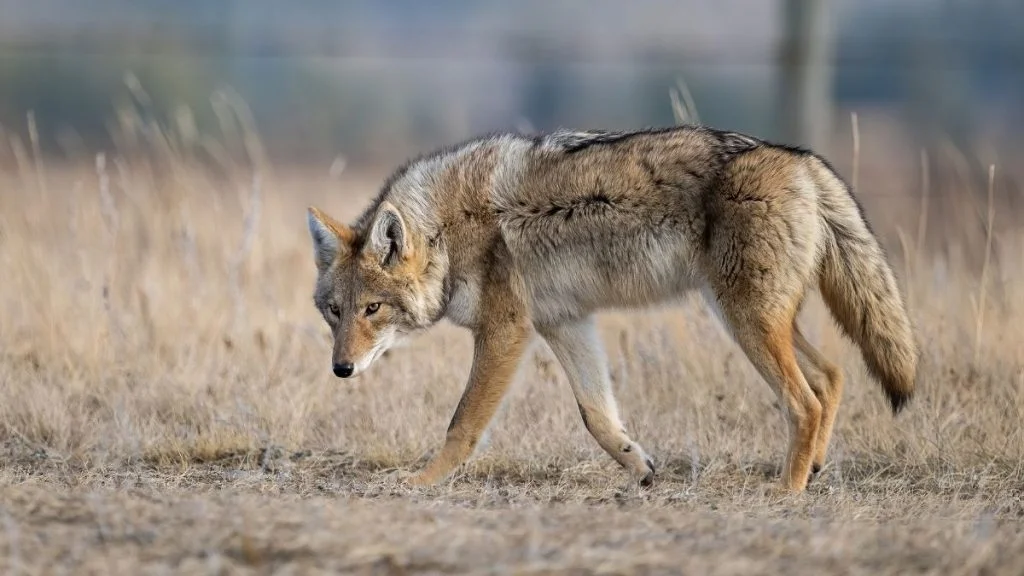The coyote (Canis latrans) is a member of the Canidae (dog) family, and it is related to wolves, domestic dogs, and some other canine creatures.
It evolved more than 300,000 years and remained a constant feature in the American wild.
These wild dogs are fierce predators, and many animals fall prey to them. But what do coyotes eat in the wild?
The coyote can technically be considered an omnivore as it can feed on both animals and plants. However, its diet is made up of 90% meat, tilting it towards the carnivorous side of the diet spectrum. Its diet includes deer, moose, and elk.
We’ll take a closer look into the coyote diet, as well as related information that would help us understand what coyotes are and their feeding.
What Are Coyotes?
Overview

The coyote was once called the American jackal because of its relationship with the golden jackal but has since gone by the name with which we know it now.1
Alternative names include the prairie wolf and the brush wolf. There are 19 recognized subspecies.
Males are bigger than females but other than that, there aren’t many differences between the sexes. The average height of both sexes falls between 3 ft 3 and 4 ft 5 inches, while the average weight is between 15 to 44 pounds.
Coyotes have been a huge part of human folklore.2 They are often portrayed as tricksters by Native Americans, and that reputation has stuck.
They hardly attack humans due to their small size, but that remains a possibility.
Distribution and Habitat
The coyote is a native of North America, where it is widely distributed across the continent. It is highly adaptable and versatile, which explains its increase in population.
It can be found in the United States, Mexico, and even getting down to Central America. You may not see it on other continents, however.
This wild dog inhabits prairies, grasslands, and deserts, among others. It often picks places that aren’t already territories of competition, like wolves and cougars.
Conservation Status
The Coyote is classified as the least concern by the IUCN because of its stable population.
The only danger these animals face is from hunting and habitat loss, usually due to human activities and habitat loss.
What Do Coyotes Eat?
Coyotes are highly carnivorous, though, as we’ll later see, they can also be considered omnivores.
This double classification is because they eat a lot of meat but not at the expense of plants.
Coyotes have a versatile diet and tend to make do with what is in their habitat. Fortunately for them, they come across enough mammals.
Coyotes feed on different deer species, moose, elk, rabbits, hares, sheep, birds, little rodents, snakes, lizards, and even amphibians (except for toads).
They can even feed on carrion, especially bison and other coyotes. Despite their versatility, coyotes are picky about what they eat. They are known to avoid shrews, moles, and brown rats.
These animals can either hunt in solitary or in packs, depending on the prey being attacked.
Larger ones need more than one coyote, but against small prey, a coyote can cope in solitary.
Do Coyotes Eat Plants?
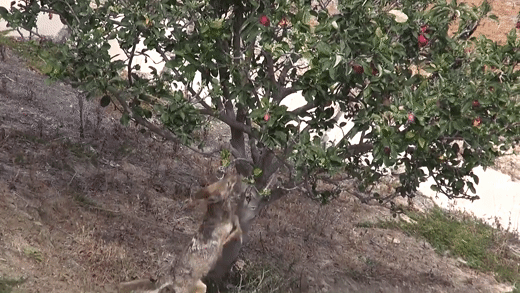
10% of the coyote’s diet consists of plants, and this ratio is also important to the wild dog’s development.
Usually, it eats whatever it can find, and during winter, when animals are scarce, it makes do with plants and fruits. This is what classifies them as omnivores.
Plants and fruits that can make up a coyote’s diet include berries, grass, apples, carrots, peanuts, and a host of others.
That said, coyotes prefer animals to plants and would only go for the latter when animals are scarce. They also opt for living creatures over carrion.
Do Coyotes Have Competition for Food?
There are some habitats coyotes avoid, and for good reasons. They are rivals with gray wolves, their fellow canids.
Despite their resemblance and the occasional interbreeding, these animals often go at loggerheads with each other.3
Sometimes wolves kill coyotes; other times, they go after the coyote’s prey. Besides humans, wolves are a coyote’s biggest nightmare.
Check out this comparison of Coyote vs Wolf vs Fox: What Are The Differences?
Coyotes aren’t the only victims here, however. They are known to trail wolf packs and steal the game of their larger relatives.
Another animal that competes with coyotes for resources is the cougar. These creatures clash with cougars, often having the upper hand.
Cougars don’t always eat dead coyotes, though. They also don’t compete with coyotes as much as wolves do.
Predators against coyotes are relatively rare when they are not being attacked by humans, but they can also face dangers from black and grizzly bears, alligators, Canada lynx, and even golden eagles.
Does Coyote’s Diet Affect Other Species?
Coyotes have both positive and negative effects on other species. For the badger, the effect is mainly positive.
Coyotes and badgers tend to cooperate when hunting for rodents. The coyotes stalk from above while the badger covers the underground. This increases their hunting rate.
On the negative side, coyotes harbor many parasites and diseases, which could be a result of the carrion it eats.
Parasites include mites, and the coyote can suffer from diseases like canine distemper, rabies, and canine hepatitis. These parasites and diseases can pass on to the prey they hunt.
Concise List of The Coyote Diet

Coyotes are omnivorous animals, meaning they eat a variety of different types of food. Their diet can vary depending on the season and the availability of different food sources.
Here is a list of some common items found in a coyote’s menu:
- Deer
- Elk
- Insects
- Amphibians (except toads)
- Bison
- Bighorn sheep
- Birds
- Reptiles
- Moose
- Thrashers
- Sparrows
- Rats
- Blackberries
- Blueberries
- Grasses
- Wild turkeys
- Raccoons
- Rabbits
And a host of others.
Related: What Eats Coyotes? (10 Coyote Predators With Pictures)
Wrap Up
Coyotes are mainly carnivores but can also be classified as omnivorous because of their ability to eat plants, an ability many wild dogs don’t have.
Its diet is as varied as the habitat it stays in and is influenced by the season. Coyotes remain a stable part of North American wildlife.
References & Notes
- Golden Jackal. ScienceDirect.
- Coyote Mythology. Britannica.
- Dell’Amore C. 2011. Coyote-Wolf Hybrids Have Spread Across U.S. East. National Geographic.


